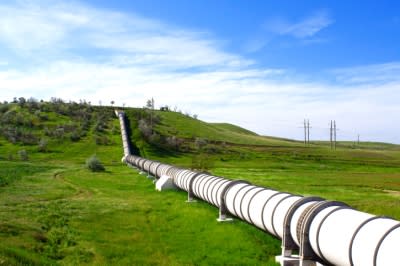Fracking, North Dakota and U.S. Economic Explosion

If every state in the Union was like North Dakota, the American economy would be growing as fast as China's. The state's numbers were stunning, a promise, perhaps, for states that have new-found shale deposits. It is also a promise for economic prosperity in those states, if government regulators do not stand in the way – which they will.
According to the U.S. Energy Information Administration:
North Dakota crude oil production (including lease condensate) averaged an all-time high of 770,000 barrels per day in December 2012. Total annual production more than doubled between 2010 and 2012 through the use of horizontal drilling and hydraulic fracturing of deposits in the Bakken Formation in the Williston Basin. North Dakota production in 2012 trailed only Texas and the U.S. Federal Offshore region, and the state accounted for 10% of total U.S. crude oil production.
GDP per capita in the state must be off the charts, particularly because the state had the lowest unemployment of any state at 3.3% in January. North Dakota has only 699,628 residents, which places it 48th by that measure among all states. So, by a barrels per person ratio, no other state ever will match that. But that does not mean that shale will not help salvage a bumpy national economy.
Shale mania has triggered all sorts of claims about its potentially transformational power. One study recently release by University of Southern California (USC) showed that California, which had the worst unemployment of any state at 9.8% in January, tied with tiny Rhode Island, could have an unbelievable jump in prosperity if its Monterey Shale fields and smaller ones could be mined. The study forecast that the mining could:
1. Create more jobs. Developing oil from the Monterey Shale could add from 512,000 to 2.8 million new jobs in California, depending upon the year.
2. Stimulate economic growth. Total economic activity in the state, as measured by the state's gross domestic product (GDP), could increase by 2.6% to 14.3% on a per – person basis.
3. Increase personal income. On a statewide basis, aggregate personal income could grow by an average of from 2.1% to 10.0%
4. Boost government revenue. Tax revenue collected by California state and local governments could grow by $4.5 billion to $24.6 billion.
It is too bad that California is not North Dakota. The state government in the nation's largest state by population is unlikely to allow hundreds or thousands of fracking sites to be set up from Oregon to Mexico. That is the weakness of the USC forecast. What is acceptable based on North Dakota mining policy likely will be rejected in many other places.
Forecasts about the benefits of fracking take into account the bounty of the practice, but not the effects of regulation and public opinion. The U.S. Energy Information Administration information about North Dakota is correct. The USC forecast is improbable.

Filed under: 24/7 Wall St. Wire, Oil & Gas Tagged: featured

